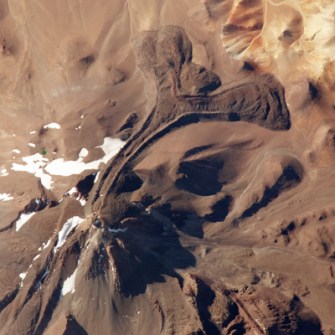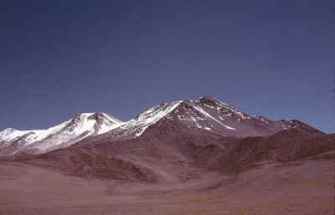Coulées!
As a volcanologist, I am partial to impressive lava flows, especially in volcanoes that erupt material that you’d think wouldn’t produce big flows. For example, there are quite a few volcanoes in the Chilean Andes that erupt dacite lavas, which are relatively viscous (sticky), so you might expect it to erupt explosively. However, you can get large dacitic to rhyolitic lava flows, quite commonly, and these large flows are called coulées (a “volcanic dome flow”).

I bring this up because the NASA Earth Observatory posted a great shot of a volcano on the Chilean-Argentine border – Llullaillaco – where you can see the gorgeous coulée that came down the side of the volcano (see above). The flow has a flow front that is likely tens of meters tall with impressive flow levees on each side, where lava that was erupted first was pushed out of the way by subsequent lava (like a bulldozer).

Chao flow in Chile. Image courtesy of Volcano World.
You see these types of flows commonly in the Andes, most famous in the biggest dacite lava flow on the planet, the Chao Dacite (see above). This flow is over 14 km long, has obvious flow features like pressure ridges and a flow front that approaches 500 meters tall! There is some pumice associated with the flow that might have come from the clearing of the vent before the eruption, but it appears to be dominantly effusive – you can see on the image that there isn’t even an obvious crater from where the flow erupted.

Another Chilean volcano with impressive coulees is Aucanquilcha (see above), near the Chilean-Bolivian border. I have a special fondness for Aucanquilcha because I wrote my dissertation on the volcano (and even have a paper on its volcanic history). The edifice itself is a series of long dacite lava flows, some of which reach 5-7 km in length, with very little preserved evidence for explosive volcanism going with it. Some of the flows (see above) have prominent flow levees and steep flow front. The volcano as a whole is really four stacked domes (see image at the GVP – taken by me!) of these coulée-style dacite flows.




